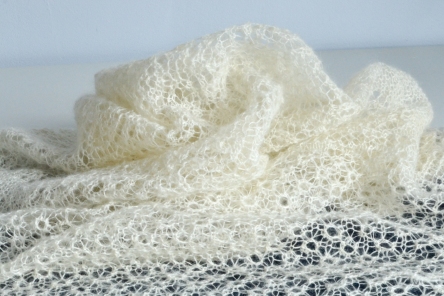designer knitting……..machine knitting
I have three of these – and a toy one from my childhood!

Circular Sock Knitting Machine
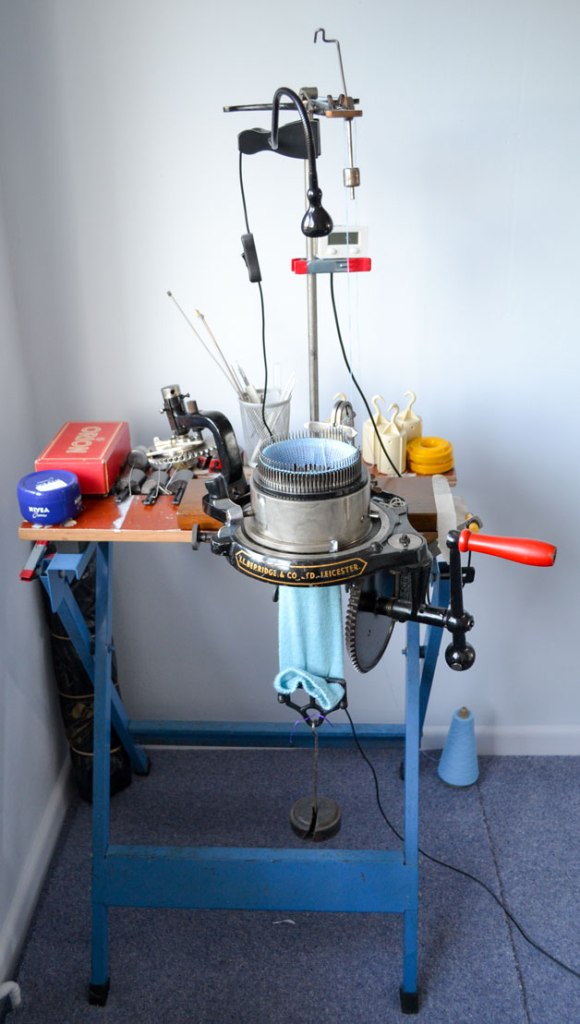
What do you do when you have sold one house and not bought the next? Perhaps I am the only one to have blown some of the money on an expensive sock knitting machine because they were fascinated by the engineering. I wasn’t really interested to use it to make socks then but things changed! I bought it from a sock knitting enthusiast (Dennis Wright) at a Knitting and Stitching show at Birmingham. He offered to teach me how to use it so one cold January morning in 2002 (I think!) we drove to his house in the Peak District. It turned out he had hundreds in his garage and only sold this as it was a duplicate. I spent a happy morning where he showed me the principles and then his wife showed me how to do argyle socks! Amazing.
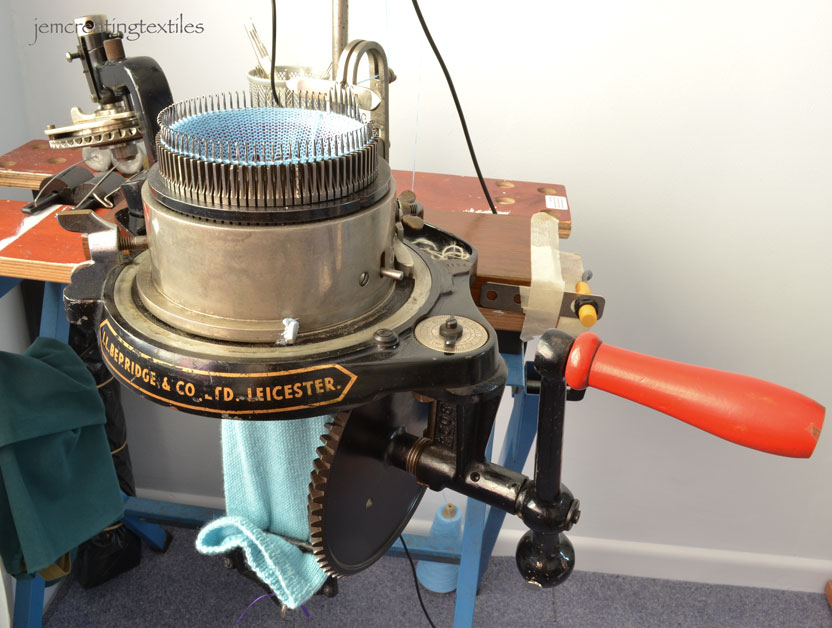
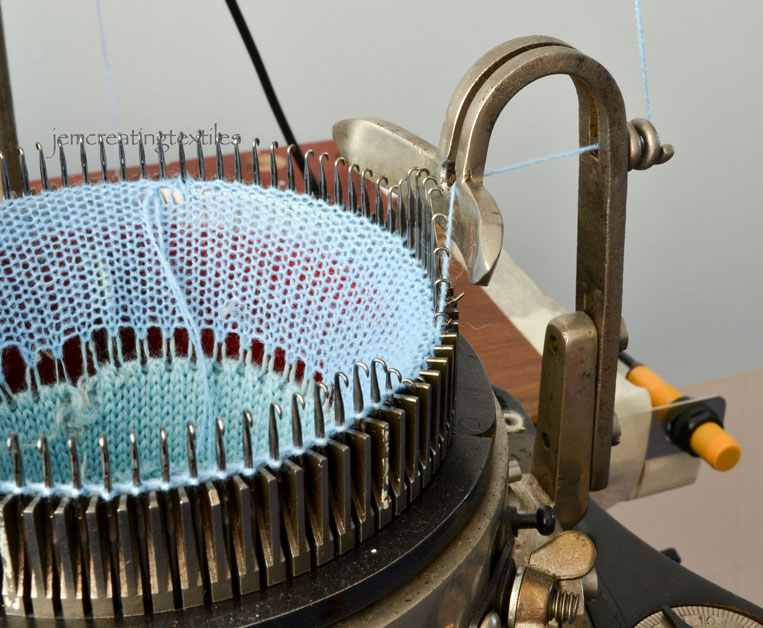
The machine I have since found out is ‘a good one’. It is substantial (code for heavy to move) and a fairly early model. It was probably made early 1900s. It has a removal ribber section (seen at the back of the LH image) and knits, once set up, by turning the handle round. The knitting needs a lot of weight. It has some modern additions- a digital row counter (the yellow rod in the RH image) and a LED light (seen in top image) that shines in just the right place!
I taught myself how to do ribs, heels, toes etc and did manage to combine them all into one. But I was busy working full time and doing many other things so it don’t get much use until 2016. I saw that a group were meeting for a weekend and there would be workshops. Before this weekend I wanted to make sure I could knit a sock and I managed it. However, this weekend and the one the following year were fantastic. About 40 machines and their owners and very few duplicate machines. What an eye opener! Everyone gave freely of their time and I learnt so much. There is nothing like being taught one to one by a very experienced teacher.1 After the weekend I joined a facebook group2 and so nice to be able to put faces to names. A very helpful group of people these are too, most if not all the people at the weekends belong. There is more on my blog about this 10jan17.

I have still to do fancy stitches , like lace or the ‘argyle’ pattern. One of the best things about the socks, other than they fit, is they are made of yarn I like and a colour I like. Also when I do rib tops they do not grip so tight that my legs swell above the ribbing! However, when I went on the course I learnt the virtues of a rolled down top – even less grip !
The second and third machines were bought in 1985 from Gaze’s Auction in Diss. They cost £6.00 for the pair! Again I was fascinated by the engineering.
The Lanofix
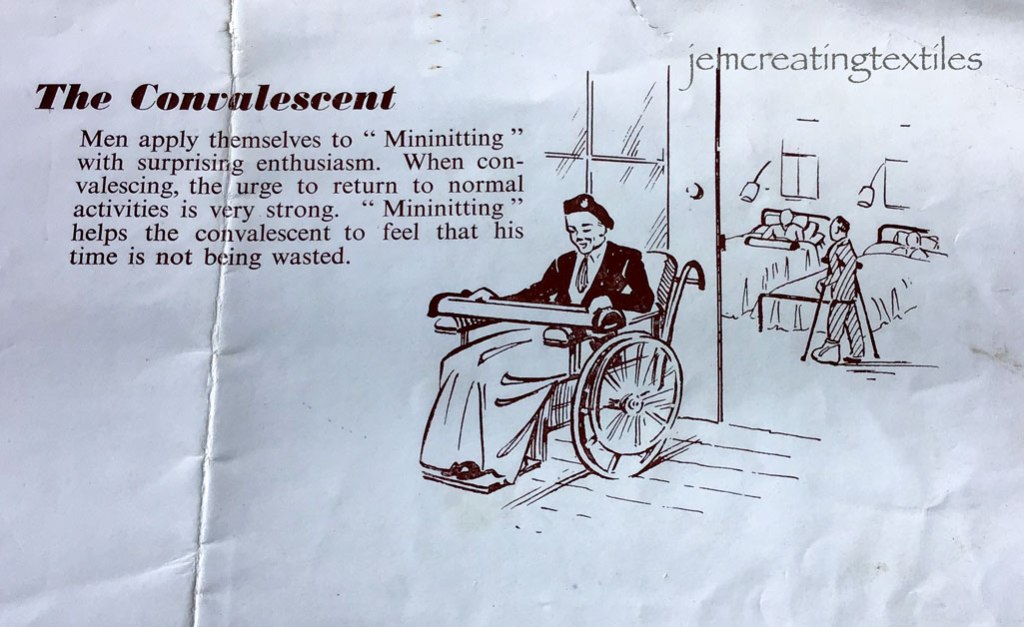
This was in its original box and made between 1949-1959 being imported from Italy and sold by Paramount Knitting in Bradford. I love the finish, it is green enamel.
It is very simple to use, once you get the hang of it and it does garter stitch nearly as easily as stocking stitch. (This can not be said of my main knitting machine. I do have a garter bar to help do garter stitch with my main machine. It is tricky and I avoid using the garter bar it if I can!

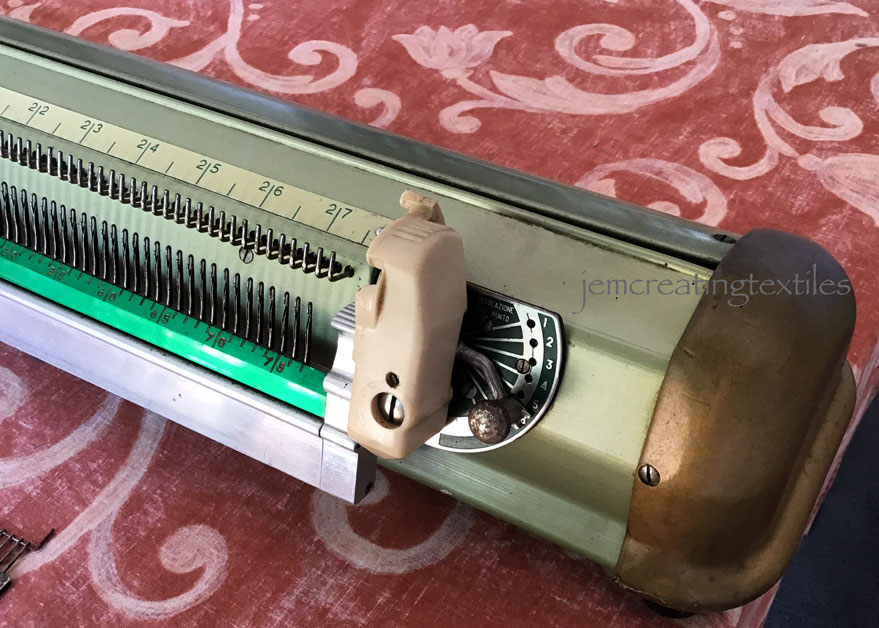
Simply, start with both slides to the R. (They can be seen at the left of the top image. The tensioner, with the numbers can be seen on the right.) Thread is wound round each needle to cast on (LtoR). Move L slider to the left this opens up a channel. The yarn is placed in the chanel, the remaining lever is moved along to the left which gives a zigzag effect. The front needle bar is inverted, the yarn is pushed down with the ‘real’ bristle brush and after checking the needle latches are closed the front bar is returned. Row knitted.
It came with an instruction manual, book of knitting patterns, eg for ladies and gents jumpers and socks (these would have seams) and a book describing how to do different textured effects. I have knitted both stocking stitch and garter stitch over the years, but not yet tried any textures.
I know of 3 other similar machines, another in this country, one in Germany and one in Australia, it would be great if there were more!
Orion 360
My third vintage machine is an Orion 360 model 2 and was made about 1969 in Liechtenstein. It is a double bed machine which means it has a ribber attached. But unlike my Brother 830 this ribber can be taken off and attached next to the main bed of the knitting machine so it knits fabric that is twice the width. These machines were workhorses when they came out. A family might have one and all the school jumpers for the children would be knitted by them. Again this comes with an instruction book and has illustrations of many different stitch patterns that can be achieved by hand manipulation. It was made before the introduction of knitting machines where the pattern was chosen by pressing buttons which preceded the punch card. It is a substantial machine, heavier than the sock knitter even and I was lucky that it came with the original box. I have only knitted samples with this and keep promising myself that it ought to have a good clean and be brought to life and then I will try some of the appealing textures. It looks as if the owner knitted several of these. The images show it on my table not fixed to a knitting table therefore ready to work. Part of the ball holder is missing but it knits well directly from a cone.
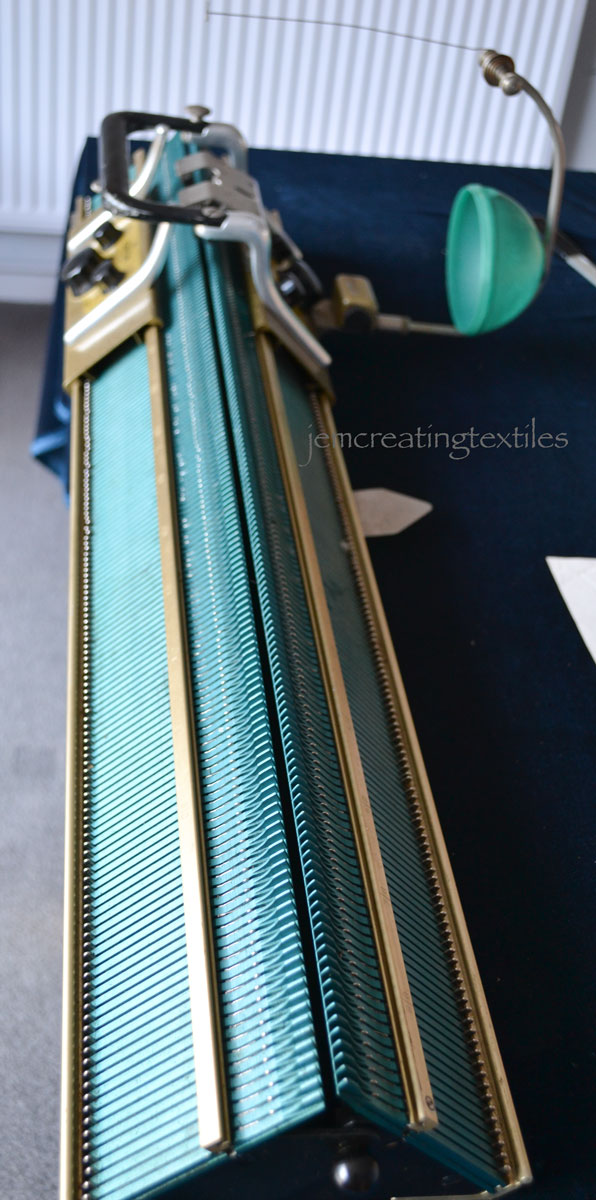
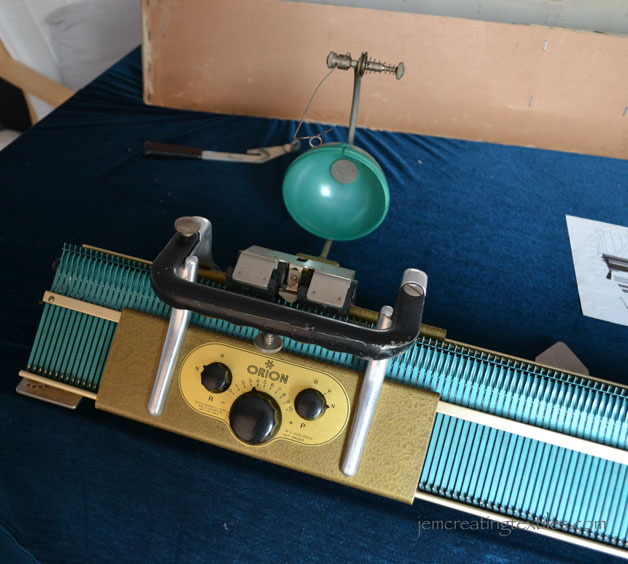
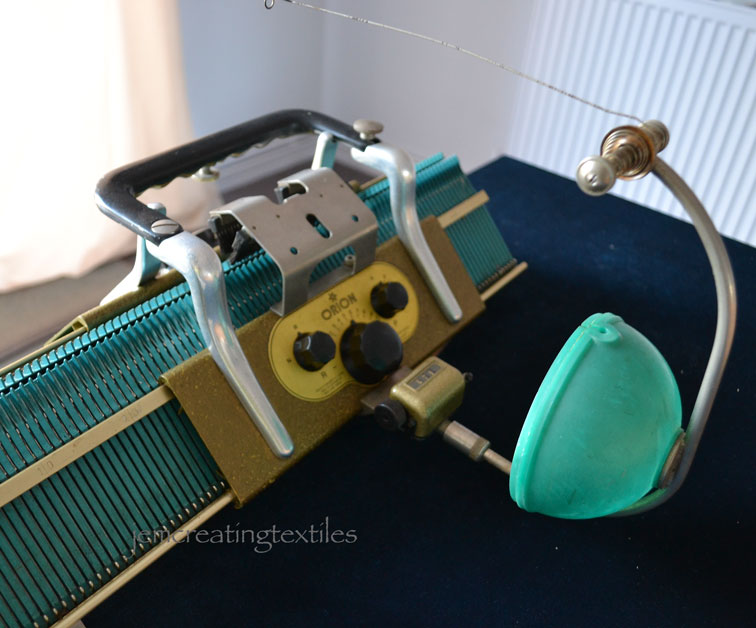
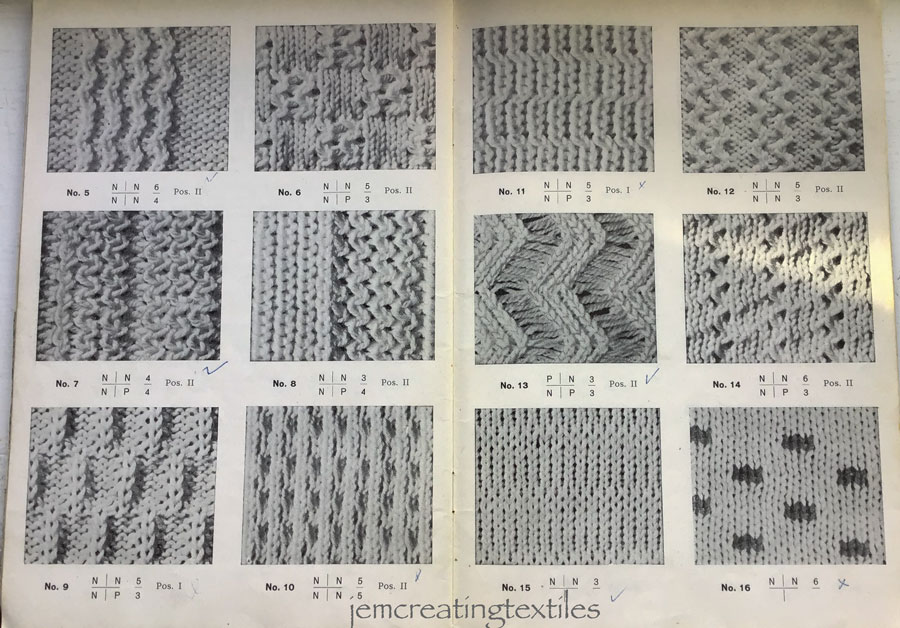
My first knitting machine
This is shown at the top of the page. I couldn’t get on with this at all. It was slower and more trouble than hand knitting! You needed a needle such as shown near the box, to lift each stitch in turn over the previous one. It was like bobbin knitting but made flat! Clearly I persevered as I knitted a hat for a doll. I was about 7 I think! At 6, our first grandson knitted a scarf for himself with the Brother 830 knitting machine!
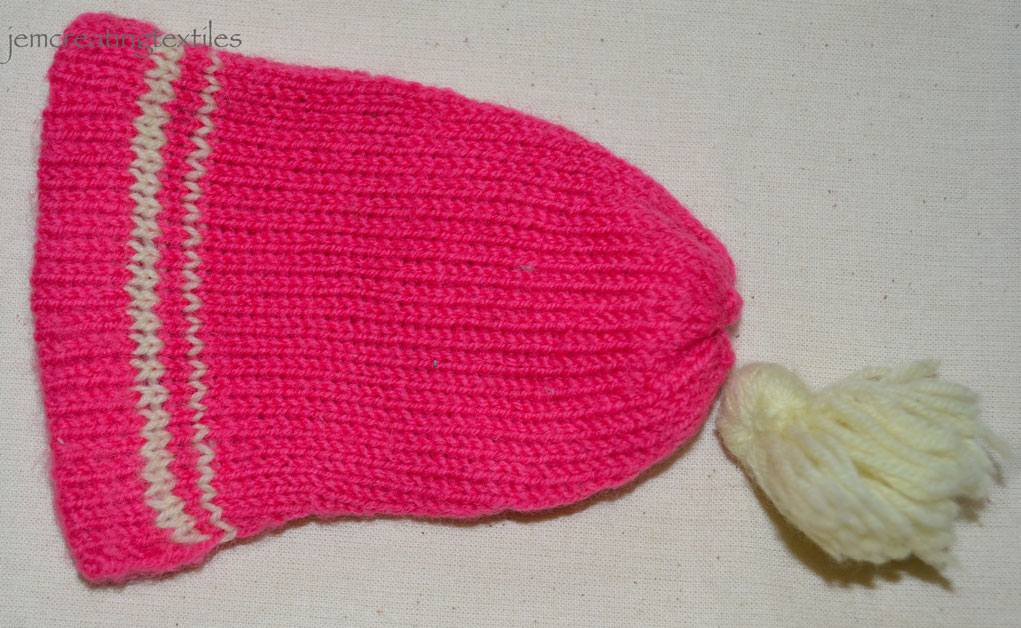
I am impressed by the tension I achieved and the like choice of colour. This was probably the only time I used the ‘machine’.
Notes
- Both weekends were organised by Mary Hawkins, and any profits went to the Frame Knitters Museum in Ruddington, the ‘home’ of sock knitting machines.
- The fb group is called Vintage Krankers
Sources
There is a fb group called ‘Vintage and Antique Knitting Machines’
©Janet Major All rights reserved
